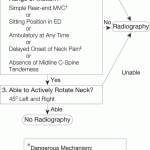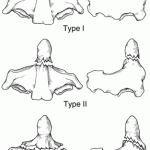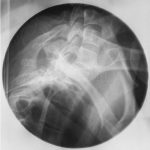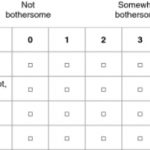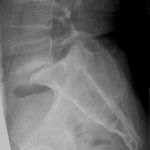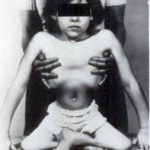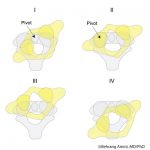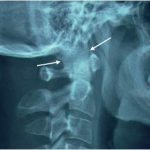Canadian C-Spine Spine Rule For Risk of Skeletal Injury Canadian C-spine rule is for use of radiography in cervical spine injuries. Cervical spine injury has the potential for neurological injury and various protocols have been developed to protect the C-spine from field to hospital emergency care. These protective measures like a backboard, collar and sandbags […]
Spine
Dens or Odontoid Fractures
Odontoid fractures are fractures of dens or odontoid process of axis vertebra or C2. Dens is a strong, tooth-like process projecting upwards from the body of the axis. Fractures of the axis make up 27% of all cervical spine injuries. Fractures of the odontoid process are the most common subtype of axis fractures (41%). Odontoid […]
What is Swimmer’s View Xray?
The swimmer’s view is an x-ray of the cervicothoracic junction that helps demonstrate the upper thoracic and the seventh cervical vertebrae. The swimmer’s view is an important view for evaluating the relationship of the cervicothoracic junction and upper thoracic vertebrae C7 through T3. Swimmer’s view x-ray is a difficult x-ray. Its positioning is difficult and […]
Kyphosis – Types, Causes, Diagnosis and Treatment
Kyphosis is a curvature of the spine which is to be present of the spine that causes curvature to be concave on the anterior side and convex on the posterior side. The reverse curvature is called lordosis. Normal and Abnormal Curvatures of Spine Kyphosis and lordosis are parts of normal spine curvature. In normal curvature […]
Sciatica Bothersomeness Index
Sciatica bothersomeness index, as the name suggests, is an index based on patients reporting of symptoms which reflects the troubled patient is going through with his/her sciatica symptoms. Sciatica, as we know, is radiating pain in the lower limb due to compression or irritation of the sciatic nerve roots or lumbar nerve roots. Contained in […]
Spondylolisthesis – Types, Presentation and Treatment
The term spondylolisthesis is derived from the Greek spondylos, meaning “vertebra,” and olisthenein, meaning “to slip.” Spondylolisthesis is defined as the anterior or posterior slipping of one segment of the spine on the next lower segment. This slippage causes mechanical or radicular symptoms or pain and can occur due to a range of causes that […]
Sacral Agenesis-Presentation, Diagnosis and Treatment
Sacral agenesis is a congenital condition characterized by the absence of the variable portion of the caudal portion [lower end] of the spine. It is a very rare deformity. Sometimes, the lumbar spine is variably absent, called lumbosacral agenesis. Sacral agenesis can occur as an isolated condition or as part of caudal regression syndrome in […]
Stagnara Wake Up Test
Damage to the spinal cord and subsequent neurological deficit may occur during surgery of the spinal cord. The Stagnara wake-up test aims at recognizing early intraoperative warning of potential damage. If the injury is recognized, steps can be taken to undo the process that might have caused it. For example, if spinal injury signs are […]
Atlantoaxial Rotatory Subluxation
Also called atlantoaxial rotatory fixation, atlantoaxial rotatory subluxation is a condition where there is a fixed rotation of C1 over C2. This condition occurs when normal motion between the atlas and axis becomes limited or fixed spontaneously or following minor trauma [which is usually the case]. It can also or follow an upper respiratory tract […]
Atlanto-occipital Fusion or Occipitalization of Atlas
Atlanto-occipital fusion or Occipitalization of the atlas [C1 vertebra]is the most common congenital abnormality of the upper cervical spine. It means partial or complete congenital fusion between the atlas and the base of the occiput. Other names for atlanto-occipital fusion are occipitalization, occipitocervical Synostosis, assimilation of Atlas. The severity ranges from a complete bony fusion […]
